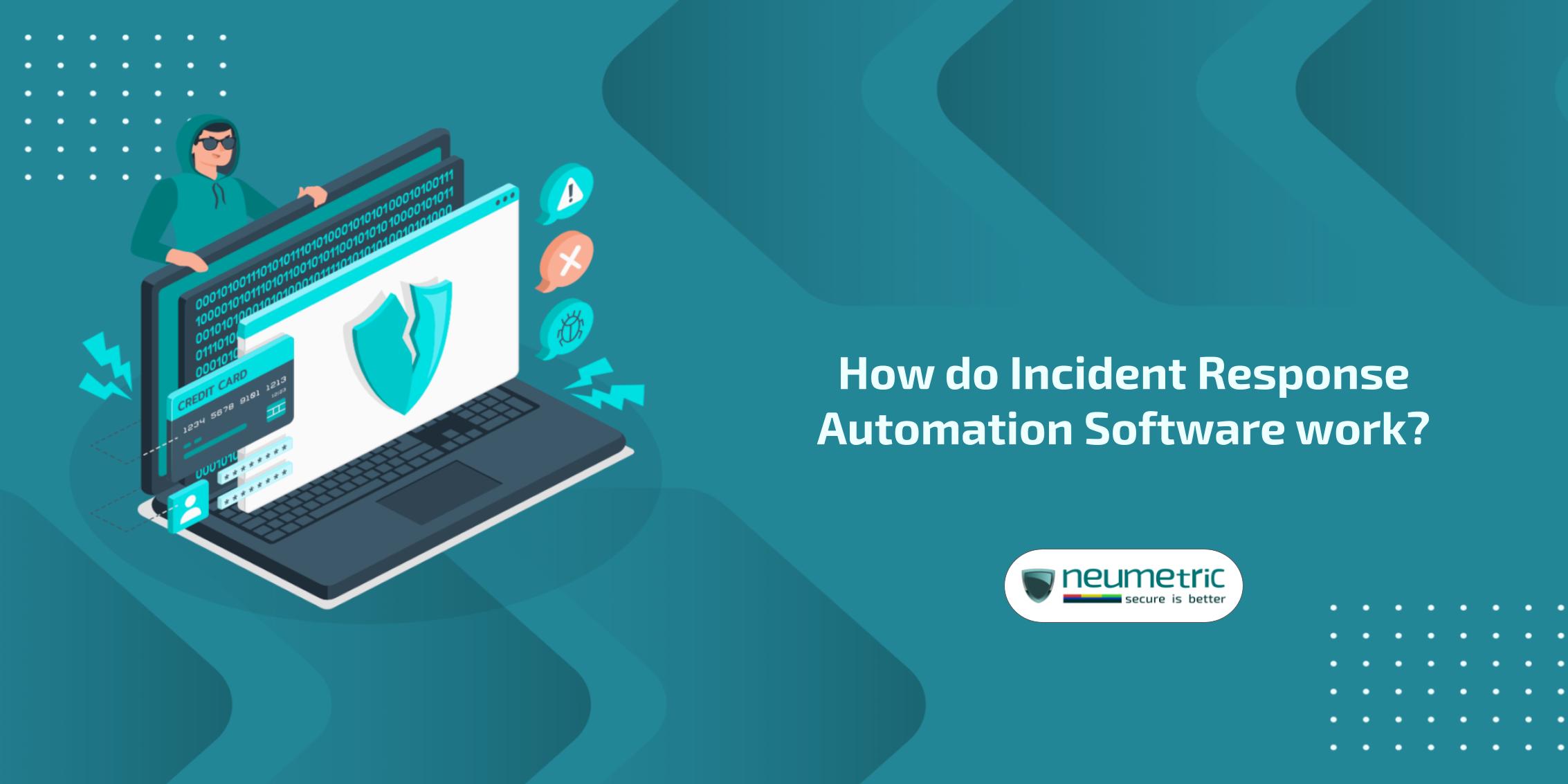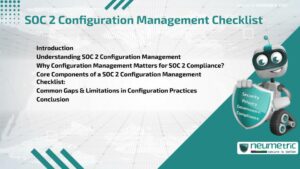Table of Contents
ToggleIntroduction:
In today’s rapidly evolving digital landscape, organizations of all sizes face an onslaught of sophisticated cyber threats, from data breaches & malware attacks to ransomware & insider threats. The speed & effectiveness of incident response have become critical factors in mitigating the impact of these security incidents & safeguarding valuable assets. However, traditional incident response processes, often reliant on manual, time-consuming tasks, are increasingly inadequate in the face of these mounting challenges.
This is where incident response automation software steps in, revolutionizing the way organizations detect, analyze & respond to security incidents. These powerful tools leverage the transformative power of automation & orchestration, empowering security teams to act with unprecedented speed, efficiency & precision. By automating the key stages of the incident response lifecycle, from initial detection to comprehensive remediation, these solutions enable organizations to strengthen their cyber resilience & stay ahead of the ever-evolving threat landscape.
In this comprehensive journal, we will delve deep into the inner workings of incident response automation software, exploring its key features, the tangible benefits it offers & the best practices for successful implementation. Whether you’re a security professional, an IT manager or a business leader, this journal will equip you with the knowledge & insights needed to harness the transformative power of these cutting-edge solutions & fortify your organization’s cybersecurity posture.
Understanding the Fundamentals of Incident Response Automation Software
What is Incident Response Automation Software?
Incident response automation software is a specialized category of cybersecurity tools designed to streamline & optimize the incident response process. These solutions leverage a combination of advanced technologies, including artificial intelligence [AI], machine learning [ML] & workflow automation, to automate the detection, analysis & remediation of security incidents.
By eliminating the time-consuming, manual tasks that often characterize traditional incident response approaches, these tools empower security teams to respond to threats with unprecedented speed & efficiency, minimizing the impact on business operations & safeguarding critical systems & data.
The Evolving Threat Landscape & the Need for Automation
In today’s dynamic digital environment, the threat landscape is constantly evolving, with cybercriminals deploying increasingly sophisticated attack methods. Ransomware, advanced persistent threats [APTs] & insider threats are just a few examples of the complex challenges organizations face. Rapid response & effective mitigation have become paramount, as the consequences of slow or ineffective incident response can be devastating, leading to significant financial losses, operational disruptions & reputational damage.
Incident response automation software plays a crucial role in addressing these challenges by enabling security teams to detect, analyze & respond to security incidents with unparalleled speed & precision. By automating the most time-consuming & repetitive tasks, these tools free up security personnel to focus on higher-level strategic initiatives, while ensuring a consistent & efficient incident response process.
Key Features of Incident Response Automation Software
Incident response automation software typically offers a comprehensive suite of features designed to streamline the entire incident response lifecycle. These may include:
- Incident Detection & Triage: These tools leverage advanced analytics, threat intelligence & integrated security solutions to rapidly detect & prioritize security incidents, enabling security teams to focus on the most critical threats. Through the use of AI & ML algorithms, the software can continuously monitor for anomalies, identify potential indicators of compromise & trigger immediate alerts, allowing for prompt investigation & response.
- Automated Incident Analysis: Incident response automation software automates the analysis of security incidents, leveraging AI & ML algorithms to quickly identify the root cause, understand the scope of the breach & determine the appropriate response actions. This includes the ability to correlate data from multiple sources, such as security logs, network traffic & vulnerability scans, to provide a comprehensive, contextual understanding of the incident.
- Automated Incident Response & Remediation: Once an incident has been detected & analyzed, these tools can automatically initiate predefined response procedures, such as isolating affected systems, implementing security controls & executing remediation tasks, all without the need for manual intervention. This rapid, automated response can significantly reduce the time it takes to contain & mitigate the impact of a security incident.
- Incident Reporting & Documentation: Incident response automation software generates comprehensive reports & documentation, providing a detailed record of the incident response process, which can be crucial for compliance, regulatory & legal purposes. These reports often include information on the incident’s timeline, the actions taken, the root cause analysis & the overall impact, enabling security teams to demonstrate their effectiveness & adherence to industry best practices.
- Collaboration & Workflow Management: These tools often incorporate features that facilitate cross-functional collaboration, enabling security teams to coordinate with IT, legal & other relevant stakeholders during the incident response process. They may also include workflow management capabilities to streamline the execution of response actions, ensuring seamless communication & task allocation among team members.
- Incident Response Playbook Management: Incident response automation software allows organizations to create & maintain customized incident response playbooks, which outline the precise steps to be taken in response to different types of security incidents. These playbooks can be easily updated & deployed across the organization, ensuring a consistent & well-defined response approach.
The Transformative Benefits of Incident Response Automation Software
Faster Incident Detection & Response
By automating the detection, analysis & response to security incidents, incident response automation software significantly reduces the time it takes for organizations to identify & mitigate threats. This rapid response capability can mean the difference between a contained incident & a full-blown data breach or system compromise, potentially saving organizations millions in direct & indirect costs.
Improved Incident Response Consistency & Accuracy
Automation ensures that the incident response process is executed consistently & accurately, reducing the risk of human error or omission. This consistency helps organizations maintain a high level of preparedness & ensures that the appropriate response actions are taken every time, regardless of the personnel involved.
Enhanced Threat Visibility & Contextualization
Incident response automation software integrates with a variety of security solutions, including Security Information & Event Management [SIEM] systems, threat intelligence platforms & vulnerability management tools. This integration provides security teams with a comprehensive, contextual understanding of security incidents, enabling more informed decision-making & targeted response.
Increased Operational Efficiency
By automating repetitive, time-consuming tasks, incident response automation software frees up security teams to focus on more strategic & high-value activities, such as threat hunting, vulnerability management & security program optimization. This improved efficiency can lead to significant cost savings & better resource allocation within the organization.
Improved Compliance & Regulatory Adherence
Incident response automation software generates detailed logs & documentation of the incident response process, which can be crucial for demonstrating compliance with various industry regulations & standards, such as HIPAA, PCI DSS & GDPR. This streamlined approach to compliance reporting can help organizations avoid costly fines & legal penalties.
Enhanced Incident Response Capabilities
Incident response automation software enables security teams to scale their incident response capabilities, allowing them to handle a larger volume of security incidents more effectively. This is particularly beneficial for organizations that face a high number of security events or have limited security personnel, as the automation of key tasks can significantly extend the reach & impact of the security team.
Best Practices for Implementing Incident Response Automation Software
Aligning with Organizational Objectives
Before implementing incident response automation software, it’s crucial to align the tool’s features & functionalities with your organization’s specific security requirements, incident response strategies & overall business objectives. This ensures that the solution seamlessly integrates into your existing security ecosystem & supports your long-term cybersecurity goals.
Defining Roles & Responsibilities
Clearly define the roles & responsibilities of various stakeholders, such as security analysts, incident response teams, IT personnel & business leaders, in the implementation & ongoing management of the incident response automation software. This promotes accountability & ensures effective collaboration across the organization.
Comprehensive Training & Change Management
Provide thorough training to all users of the incident response automation software, ensuring they understand its features, functionality & the processes associated with its use. Additionally, develop a robust change management strategy to address any resistance or concerns that may arise during the implementation phase, as the introduction of new technologies can often be met with apprehension or skepticism.
Continuous Monitoring & Optimization
Regularly review the performance & effectiveness of the incident response automation software & make adjustments as necessary to address evolving security threats, compliance requirements & organizational needs. This iterative approach helps maintain the tool’s relevance & maximize its long-term benefits.
Integration with Existing Security Solutions
Integrate the incident response automation software with your organization’s existing security solutions, such as SIEM, threat intelligence platforms & vulnerability management systems. This holistic approach enhances the tool’s effectiveness & provides a more comprehensive view of your organization’s security posture, enabling more informed decision-making & targeted response.
Incident Response Playbook Development & Maintenance
Invest time & resources into developing & regularly updating your organization’s incident response playbook, which outlines the precise steps to be taken in response to different types of security incidents. Ensure that these playbooks are seamlessly integrated with the incident response automation software for optimal effectiveness & consider incorporating scenario-based testing & simulation exercises to validate the playbook’s efficacy.
Conclusion
In the face of an ever-evolving landscape of sophisticated cyber threats, the role of incident response automation software has become increasingly vital for organizations seeking to bolster their cybersecurity posture. These cutting-edge tools leverage the transformative power of automation & orchestration to empower security teams, enabling them to detect, analyze & mitigate security incidents with unparalleled speed & precision.
As we have explored in this comprehensive journal, incident response automation software offers a multitude of benefits that can be transformative for organizations of all sizes. From faster incident detection & response to enhanced threat visibility & improved compliance, these solutions have the potential to significantly strengthen an organization’s overall cyber resilience.
To fully unlock the potential of incident response automation software, it is essential to adopt a strategic, well-planned approach to implementation. This includes aligning the tool’s features with organizational objectives, defining clear roles & responsibilities, providing comprehensive user training & integrating the solution with the existing security ecosystem. Additionally, a commitment to continuous monitoring & optimization is crucial to ensure the software remains relevant & effective in the face of evolving security threats & compliance requirements.
By embracing the power of incident response automation, organizations can free up their security personnel to focus on more strategic, high-value initiatives, while demonstrating a proactive & robust approach to cybersecurity. As the digital landscape continues to grow in complexity, the adoption of these transformative tools will be a key differentiator for organizations seeking to stay ahead of the curve & protect their most valuable assets.
Key Takeaways
- Incident response automation software is a critical tool for organizations looking to streamline & optimize their incident response processes in the face of increasingly sophisticated cyber threats.
- These solutions leverage advanced technologies, such as AI, ML & workflow automation, to automate the detection, analysis & remediation of security incidents, enabling faster & more consistent response.
- Key features of incident response automation software include incident detection & triage, automated incident analysis, automated incident response & remediation, incident reporting & documentation, collaboration & workflow management & incident response playbook management.
- The primary benefits of using incident response automation software include faster incident detection & response, improved consistency & accuracy, enhanced threat visibility & contextualization, increased operational efficiency & cost savings, better compliance & regulatory adherence & the ability to scale incident response capabilities.
- Successful implementation of incident response automation software requires aligning the tool with organizational objectives, defining clear roles & responsibilities, providing comprehensive training, continuously monitoring & optimizing performance & integrating the tool with existing security solutions.
- Maintaining up-to-date & effective incident response playbooks is crucial for ensuring the long-term success & relevance of incident response automation software within an organization.
Frequently Asked Questions [FAQ]
How does incident response automation software differ from traditional incident response processes?
Traditional incident response processes often involve manual, time-consuming tasks, such as incident detection, analysis & response. Incident response automation software, on the other hand, leverages advanced technologies like AI, ML & workflow automation to streamline & accelerate these processes, enabling security teams to respond to incidents more quickly & effectively.
What are the key benefits of using incident response automation software?
The primary benefits of incident response automation software include Faster incident detection & response, Improved consistency & accuracy in the incident response process, Enhanced threat visibility & contextualization, Increased operational efficiency & cost savings.
How can organizations ensure the successful integration of incident response automation software with their existing security infrastructure?
Successful integration requires a strategic, well-planned approach like aligning the tool’s features with organizational objectives & security requirements, defining clear roles & responsibilities for stakeholders involved in the implementation & management of the software.





